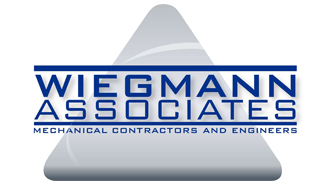| This project has received a 2015 Contracting Business Design/Build Award.
Retrofits of historic buildings can pose significant challenges to mechanical contractors. Existing equipment has to be removed and new systems worked in without disrupting the site’s architectural features. This was the case at the former site of the U.S. Post Office in St.Charles, Mo., a suburb of St. Louis. The building was built in 1909, had been converted to offices decades later, and in 2015 was undergoing another change. This time around, the $132,000 HVAC project was part of a $1.5 million conversion of the St. Charles Old Post Office into a state-of-the-art co-working center for digital startup businesses, OPO Startups, which provides new, regional digital businesses with affordable workspace and access to mentors, potential investors, programming, educational resources and a community of local entrepreneurs. It’s a busy place, and must provide consistent comfort for all. Fine details are everywhere to be found Wiegmann Associates completed the historic renovation in June 2015, on-time and within budget. Improve & Preserve Still solid: the original St. Charles post office building Flexible Comfort Control Options Post office interior has been maintained to its original state over the years “Originally, the client was leaning toward a variable refrigerant flow (VRF) system. However, the floor plan was ever-changing so they could get the space they needed, so we decided it would be best to use a rooftop unit,” said Jacob Randolph, project engineer. “Jerry Wiegmann is known as a design innovator, and someone who thinks ‘outside the box.’ He showed Droste & Sons why in this case a rooftop unit was the best way to go,” Randolph said. WIEGMANN ASSOCIATES Team Baseboard grilles are hidden by original radiators Working in a historic building created numerous design challenges, which Wiegmann faced and managed with aplumb, key being the concern for the building’s architectural integrity. This included supporting the 25-ton VVT system by 100-year-old structures. The team also had to fit and conceal new, significantly larger equipment and ductwork into small spaces without knocking down walls. PRODUCT KEYS TO SUCCESS Ductwork was fabricated by Wiegmann’s in-house fabrication team. An impressive part of the project is a coil duct in a converted top floor. “For all duct installation, we had to carefully decide how to route it through the building without punching through too many walls,” Randolph said. When the former basement boiler room was converted into dedicated offices, studio space, and co-working space, the 24-inch diameter cast-iron door from the old boiler was preserved and hung on the wall as a design element. As with all Wiegmann projects, all ASHRAE design standards and local codes were met. For air balancing, they employed National Environmental Balancing Bureau-certified methods. The facility was turned over and ready for business after Wiegmann Associates started the HVAC systems and thoroughly commissioned the equipment. And now, it’s up and running. All private office space at the OPO Startups co-working center has been leased. |
Source: Wiegmann – Articles
